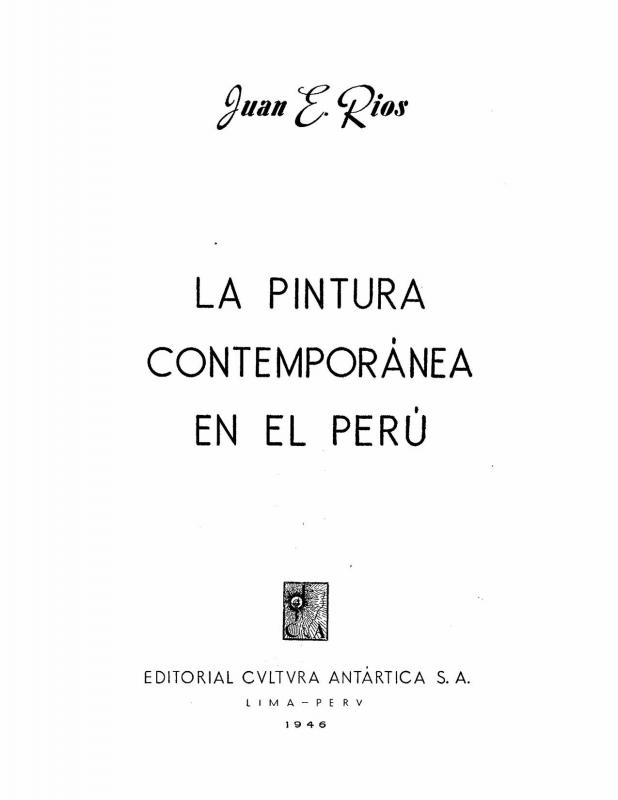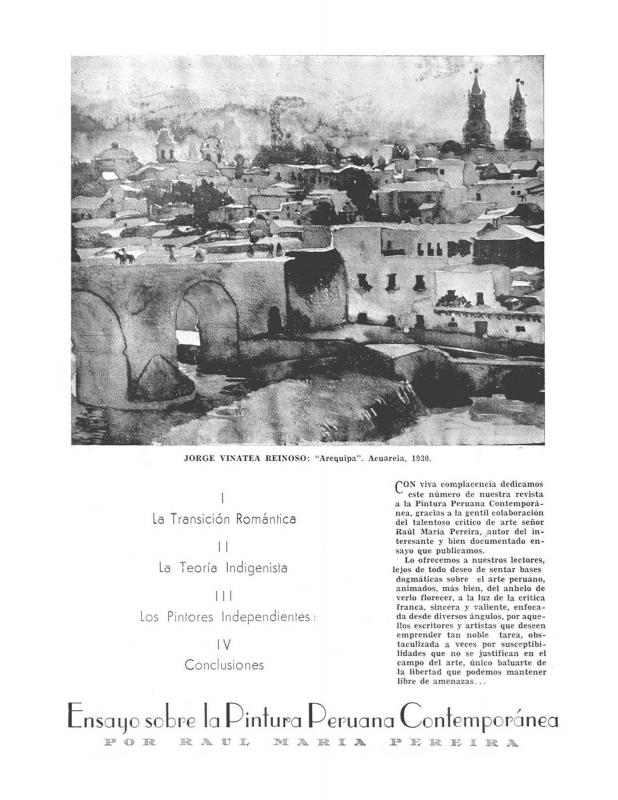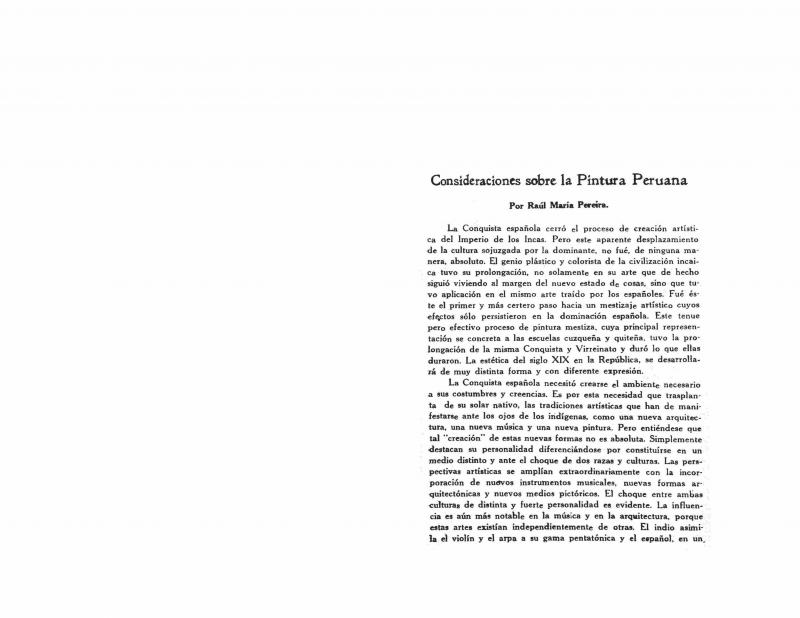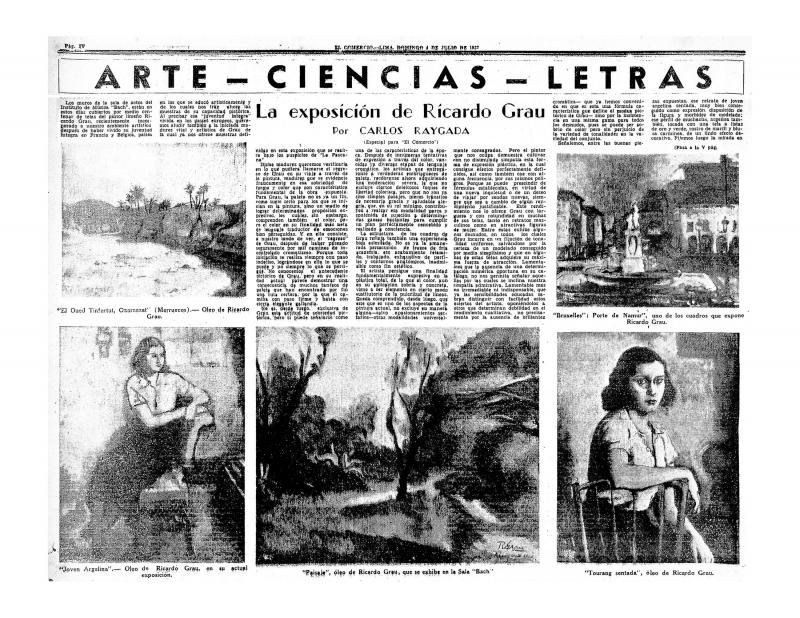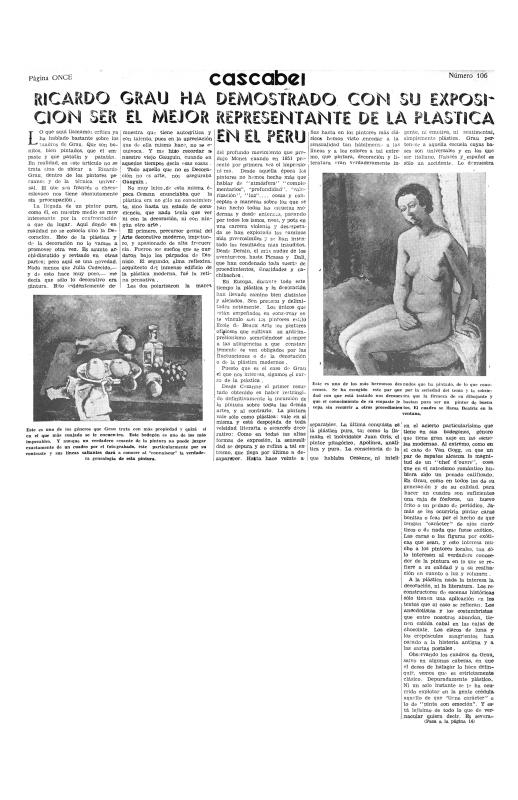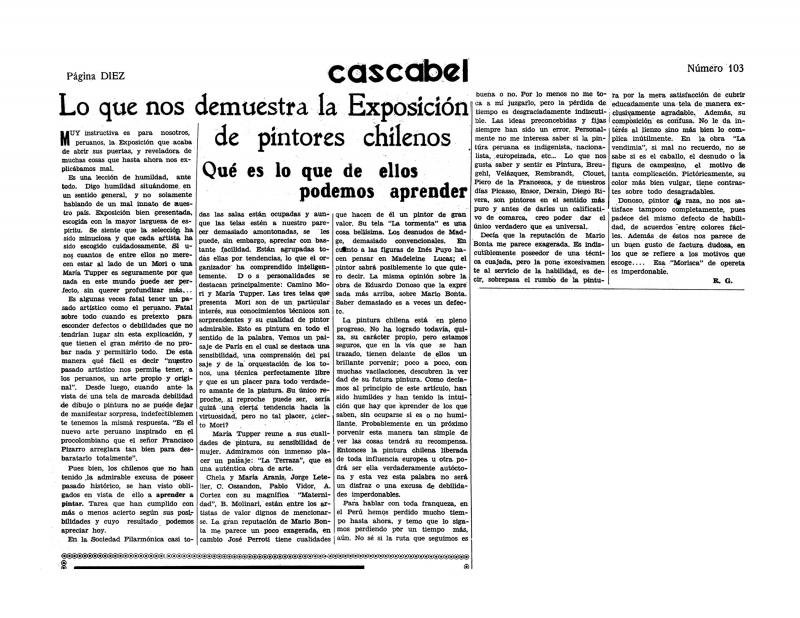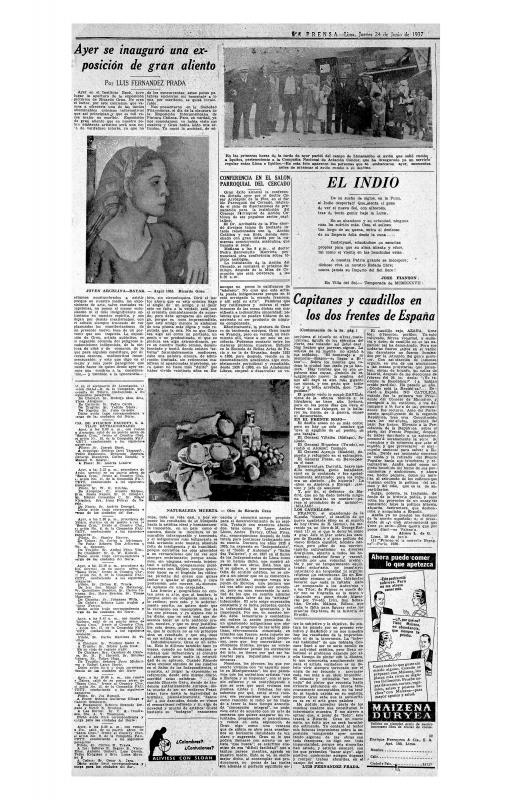In this article, writer Froylán Miranda Nieto describes Ricardo Grau as an artist “whose Peruvianness is not unconscious, or born of basic instinct, but rather intentional and reasoned, like the true love of men.”
Born in Bordeaux, France in 1907, painter Ricardo Grau returned to Lima permanently in early 1937 after having studied at the École Royale des Beaux-Arts in Brussels and the École Supérieure des Beaux-Arts in Paris, as well as in the private studios of painters André Favory, André Lothe, Fernand Léger, and others. Characterized by conservative figuration, his technically sound work formed part of the rappel à l'ordre that emerged in France after World War I. In Lima, that formalist and cosmopolitan approach to painting—one that, despite traditional language, timidly incorporated some avant-garde resources—was seen as an antidote to the Indianism advocated by José Sabogal at the Escuela Nacional de Bellas Artes (ENBA). Grau played an important role in the I Salón de Independientes, where opposition to Indianism was first expressed publicly by a diverse group of artists not bound by an overriding agenda but, rather, by interest in providing an alternative to the ENBA. It was at Grau’s first solo show, held the following month, that he consolidated a leading position in a movement to renew the local art scene. While Carlos Raygada (1898–1953)—the only intellectual of the day to work consistently in art criticism—read that show in solely formalist terms, radical critics of Indianism like Luis Fernández Prada (1917–73) saw it as an authentic renovation; they believed the show put the local scene in synch with new developments in international art without the thematic restrictions and deliberate technical crudeness of the “Peruvian School” advocated by the Indianists.
[For additional information, see in the ICAA digital archive the following articles: Juan E. Ríos’s “La pintura contemporánea en el Perú” (doc. no. 1293275); Raúl María Pereira’s texts “Ensayo sobre la pintura peruana contemporánea (doc. no. 1293152) and “Consideraciones sobre la pintura peruana” (doc. no. 1293103); Carlos Raygada’s “La exposición de Ricardo Grau” (doc. no. 1146716); Carlos More’s “Ricardo Grau ha demostrado con su exposición ser el mejor representante de la plástica en el Perú” (doc. no. 1146600); Ricardo Grau’s “Lo que nos demuestra la Exposición de pintores chilenos: qué es lo que de ellos podemos aprender” (doc. no. 1146583); and Luis Fernández Prada’s “Ayer se inauguró una exposición de gran aliento” (doc. no. 1144189)].

